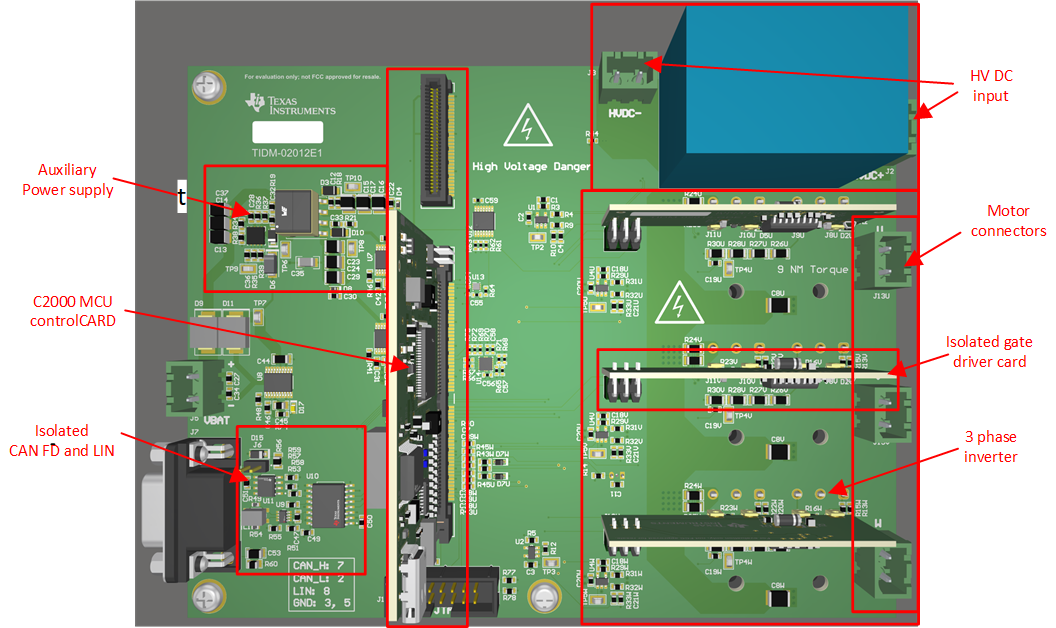TIDUF17 November 2022 TMS320F2800152-Q1 , TMS320F2800153-Q1 , TMS320F2800154-Q1 , TMS320F2800155 , TMS320F2800155-Q1 , TMS320F2800156-Q1 , TMS320F2800157 , TMS320F2800157-Q1
- Description
- Resources
- Features
- Applications
- 5
- 1System Description
-
2System Overview
- 2.1 Block Diagram
- 2.2 Design Considerations
- 2.3 Highlighted Products
- 2.4 System Design Theory
- 3Hardware, Software, Testing Requirements, and Test Results
- 4Design and Documentation Support
3.1.1 Hardware Board Overview
Figure 3-1 shows an overview of a typical eCompressor drive system.
The motor control board has functional groups that enable a complete motor drive system. The following is a list of the blocks on the board and their functions, Figure 3-2 shows the top view of the board and different blocks of the TIDM-02012 PCB.
- DC bus input
- DC bus input connector
- 10 uF film capacitor rated for 1.3 kV
- 3-phase inverter for eCompressor motor
- Up to 5 kW 3-phase inverter supports PMSM or IPM
- 15 kHz switching frequency
- 3-shunt / single shunt for current sensing
- Amplify and input filters for the analog signals
- Control
- TMS320F28039C MCU controlCARD
- 100 MHz 32-bit CPU with FPU and TMU
- Auxiliary power supply
- On-board power supply to generate isolated +6 V, and +16 V. The +6V is then drived to +5V and +3.3V via LDO to power the controlCARD and control circuits.
 Figure 3-2 The Layout of eCompressor Reference Design Board
Figure 3-2 The Layout of eCompressor Reference Design BoardAlthough the TMS320F280039C controlCARD only takes one 120-pin HSEC connector, we reserved the 180-pin HSEC connector for compatibility with future devices.
TI recommends taking the following precautions when using the board:
- Do not touch any part of the board or components connected to the board when the board is energized.
- Use the AC Mains/wall power supply to power the kit. TI recommends an isolation AC source.
- Do not touch any part of the board, the kit or its assembly when energized. (Though the power module heat sink is isolated from the board, high-voltage switching generates some capacitive coupled voltages over the heat sink body.)
- Control Ground can be hot.